This post may contain affiliate links, meaning I can earn a small commission from items you purchase (at no cost to you).
Recently, I stumbled across an article that talked about toothpaste ingredients and the issues they can actually cause rather than prevent— and it startled me. I know there are TONS of natural toothpaste companies out there nowadays… yet they’re a bit pricey. If I can make something simple + effective at home for a fraction of the price, why not? Here’s my very own homemade toothpaste recipe… full of only the good stuff.
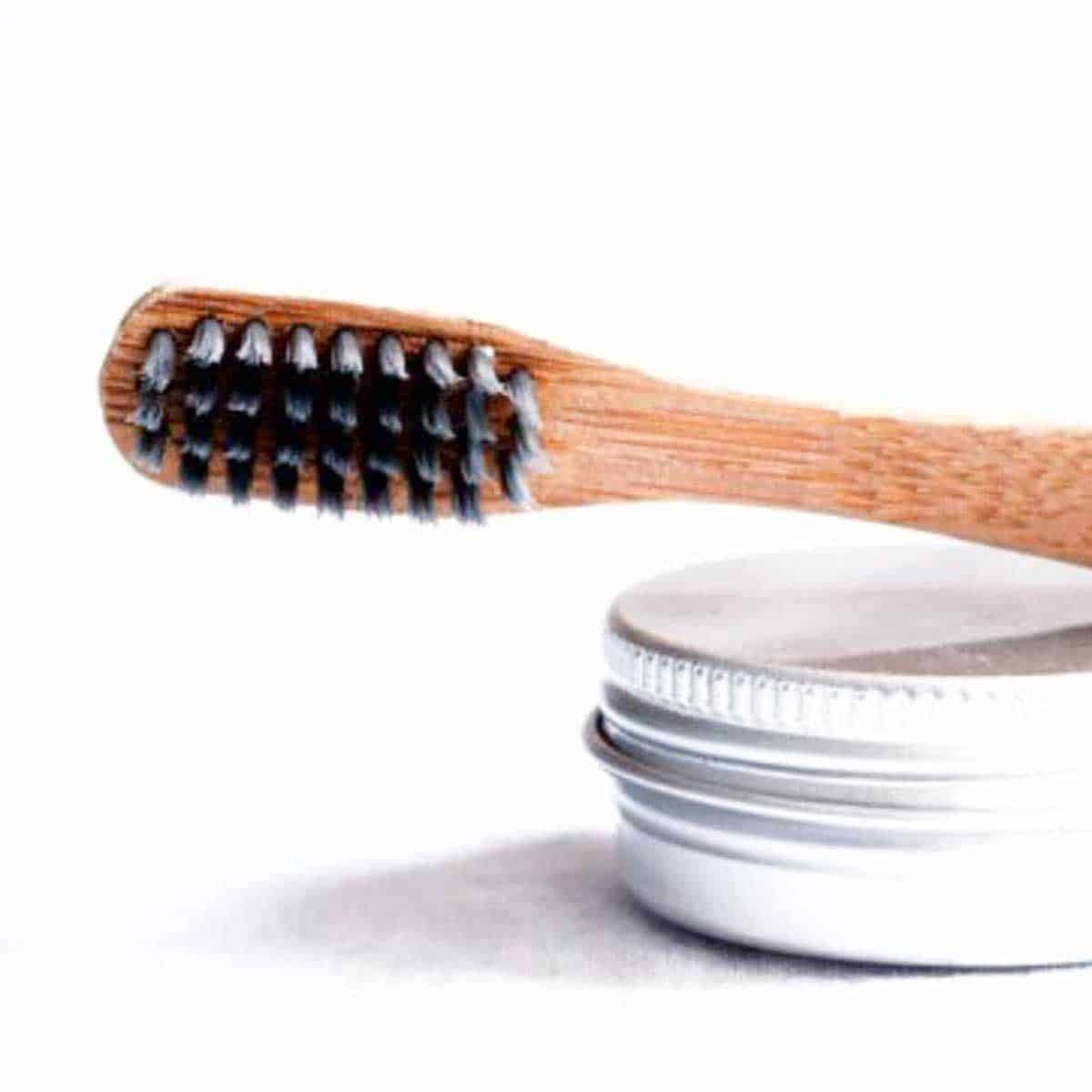
I can honestly say this is the best natural toothpaste I’ve tried, and that’s saying something since I’ve been on the hunt for a great option for a while!
Note: There is no fluoride in this recipe. Depending on your stance with this, feel free to add in a fluoride product or use a fluoride mouthwash afterwards.
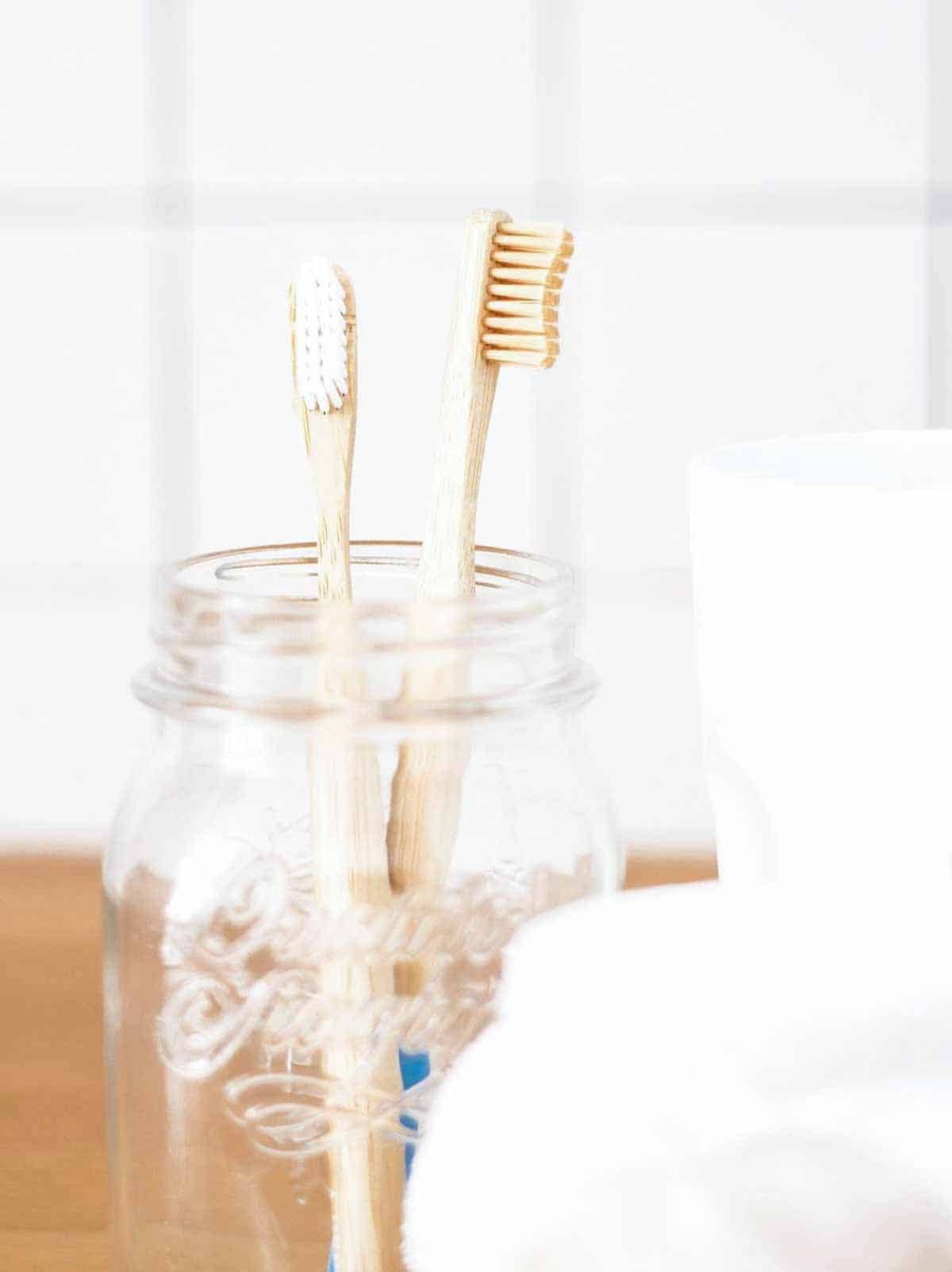
Common toothpaste ingredients
Two ingredients that have a pretty bad wrap are:
1. Glycerin: It gives toothpaste a nice creamy texture and coats the teeth for “protection”, yet at the same time it also stops re-enamalization (so cavities can’t self-heal.)
2. Sodium fluoride: A by-product of aluminum manufacturing that is found in rat poisons and industrial pesticides).
Scary stuff, huh? Well, rather than freak out about it every time I brush my teeth, I decided to make some homemade toothpaste sans weird stuff. And yes— I threw in some wonderful coconut oil that I’m beyond obsessed with and it’s millions of effective uses.
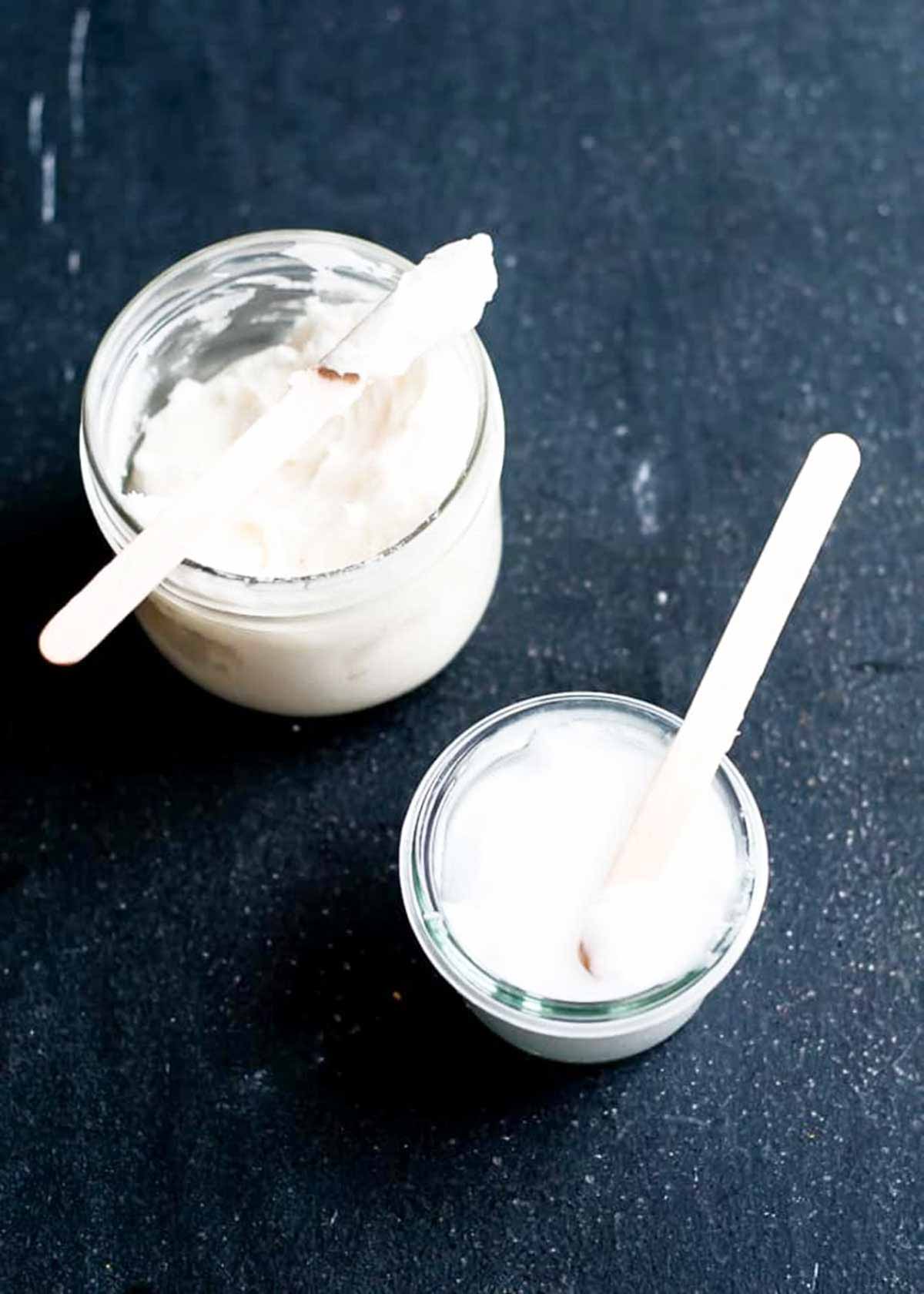
Natural toothpaste recipe
Once I started experimenting with a homemade toothpaste recipe, I was pleasantly surprised to find out how few ingredients I actually needed. My recipe has 4 ingredients, with an optional 5th if you add in activated charcoal. Not only is this recipe simple, it contains only plant based ingredients that are common. No weird chemical compounds or additives here!
When whipping up a batch of this homemade toothpaste, I typically triple the batch. That way each bathroom has its own container, so there’s no family fights over the jar. To keep the ingredients light and airy, I use an immersion blender rather than mixing with a blender or food processor.
Antibacterial essential oils
If you choose the right essential oils, then you can create a strong antibacterial toothpaste. I suggest these essential oils, which I typically purchase from Plant Therapy:
- Grapefruit Oil
- Peppermint Oil
- Tea Tree Oil
- Orange Oil
- Lemongrass Oil
I am thrilled to have found a homemade toothpaste replacement that I actually enjoy using as well as have fun making. I like that I can tweak the recipe depending on my personal preference at the time (sweeter, minty, fruity, etc— it’s all about what essential oils I put in it). This summer I made a batch with grapefruit oil and it has a citrus-tang to it, which was refreshing. Now I am using eucalyptus oil and I love the minty taste.
How to store DIY toothpaste
I like to store homemade toothpaste in a wide-mouth mason jar or leak-proof metal tin. Use a popsicle stick to dip into the toothpaste and and then spread your toothbrush. You can also use a squirt bottle and cut a wide tip on it to help it come out.
Homemade Dog Toothpaste
YES… I made this recipe for me and my family… yet it also works with dogs! Since my sweet dog (Barrett the Huskador), cannot resist licking and swallowing everything in his face, I made this for him too. Since they are completely natural ingredients, there’s no harm if he licks it while I brush.
Other DIY recipes
If this natural recipe has piqued your interest in more natural products you can use in your home, then I’ve got some more great recipes for you. These recipes are plant based versions that seriously work, just like this homemade toothpaste recipe:
- Homemade chest rub
- Fire cider
- Ginger lemon honey tea
- Homemade deodorant
- Elderberry syrup
- Anti-inflammatory smoothie cubes
- Bloat-fighting smoothie
- DIY lip scrub
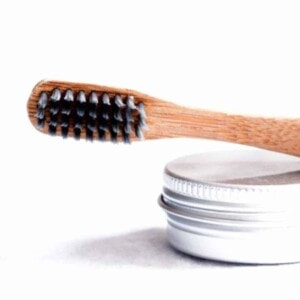
Homemade Toothpaste Recipe
Ingredients
- 6 tablespoon coconut oil, unrefined
- 6 tablespoon baking soda
- 25 drop essential oil eucalyptus, grapefruit, peppermint
- 1 teaspoon stevia or more if you like it sweeter
- activated charcoal optional
Instructions
- Mix all ingredients together in a bowl. I used my to whip it really well and give it a light creamy texture.
- Pour into a mason jar and seal it up until ready to use.
Notes
- Getting it out of the mason jar can be an adjustment. Use a popsicle stick to dip into the toothpaste and spread nicely onto the toothbrush. You can also use a squirt bottle (you will need to cut the pointed tip wider).
- Adding activated charcoal can be a gentle way to whiten your teeth.

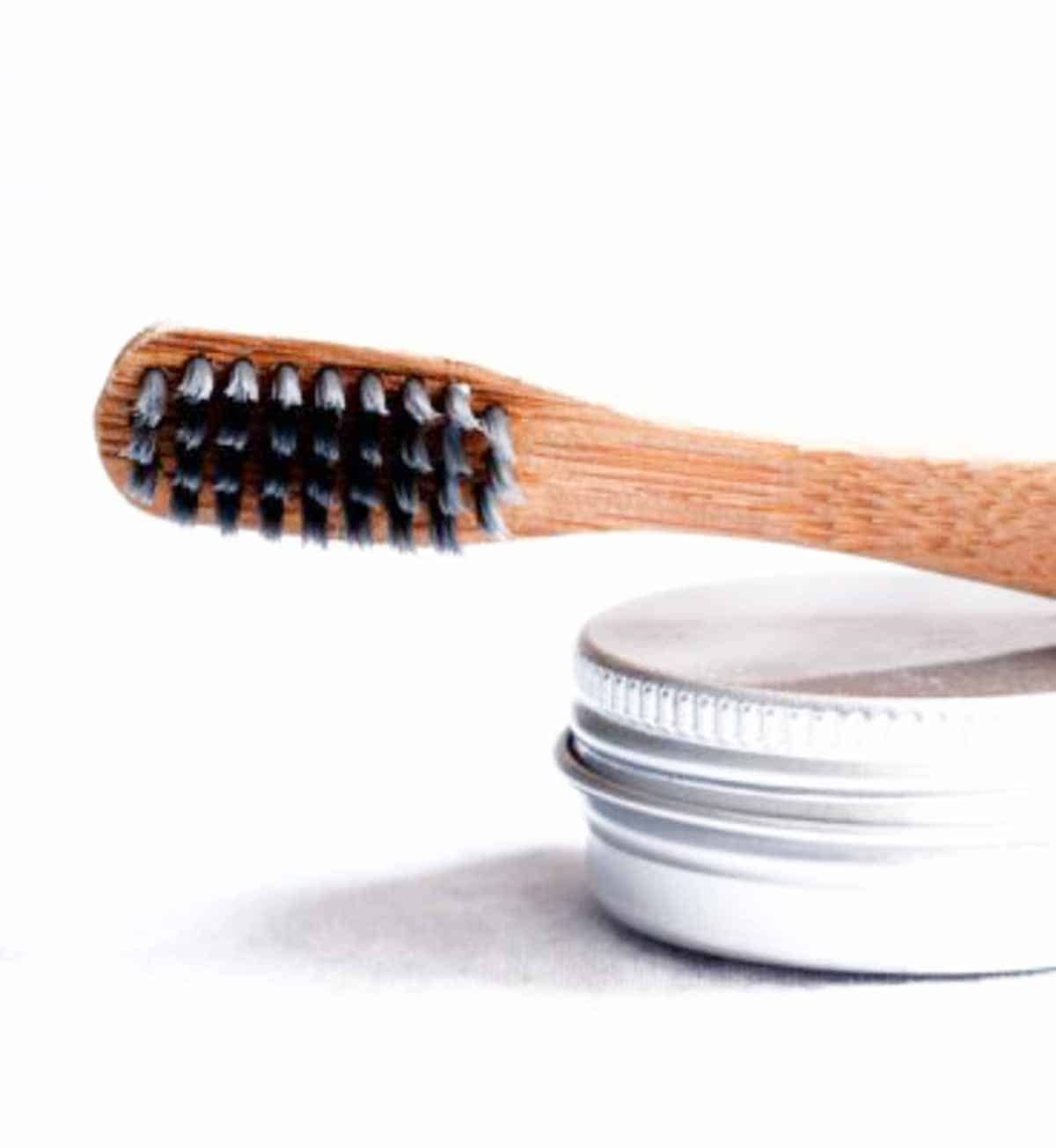
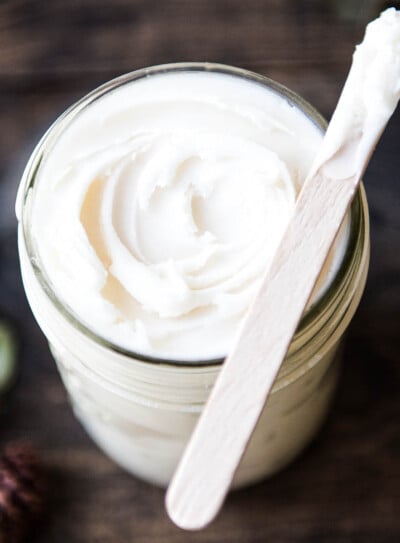
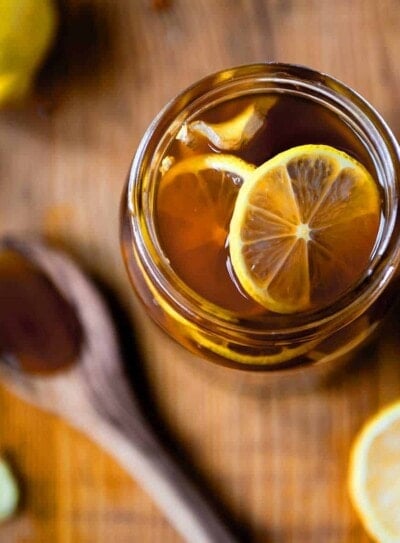
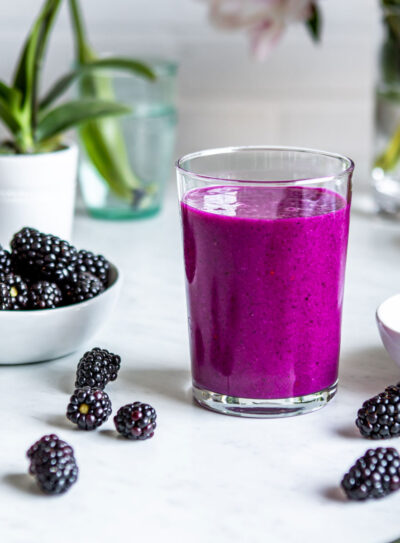
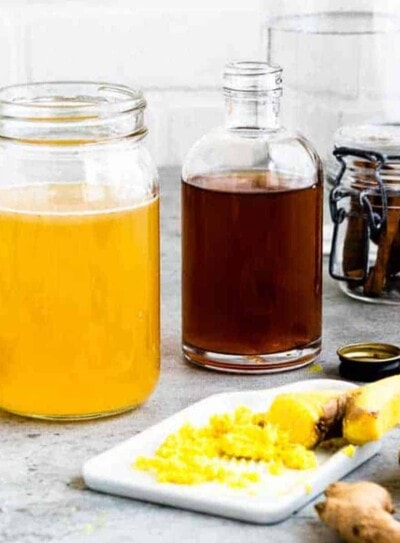
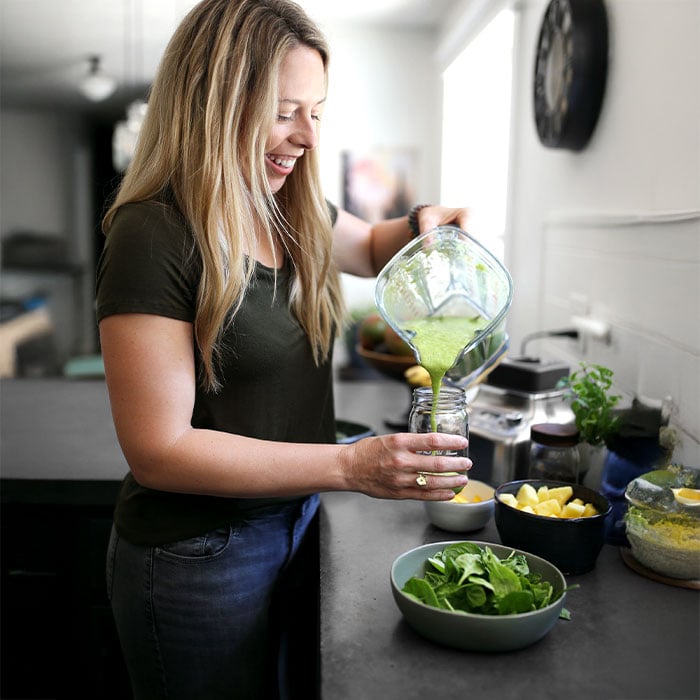









Super
A lot of ‘natural’ toothpastes still leave my teeth feeling slightly filmy, but this one doesn’t! I also love that I can change the flavor of each batch; I get bored of the same old taste.
I’m so happy I’ve found you, ive been looking for toothpaste recipes for a while but ones I’ve found had no measurements. Can’t wait to try your toothpaste.
So glad you found us, Maureen! Def let us know what you think of the toothpaste. 🙂
My understanding is that any formula containing water will soon be breeding bacteria unless a preservative is used. Am I wrong?
BTW, I just made this and I really like it. I’ve looked for preservatives for toothpaste but the 3 commonly used ones, 2 are parabens and sodium benzoate doesn’t sound much better. I know there is no such thing as a totally effective natural preservative and in other water inclusive products I make I use Optiphen Plus, but I don’t know if that is acceptable for toothpaste.
Anything you can help me with would be greatly appreciated as I’m on a mission to make toothpaste!
Thank you!
And thank you for sharing this recipe.
Regards,
Trish
Hi Trish! The good news is that our formula doesn’t contain water. Plus the coconut oil in our recipe actually as properties that will keep bacteria at bay. So it should work out great! Glad you like it so far!
Someone just told me that tea tree oil should never be but in your mouth—-poisonous if injested
You should def not ingest tea tree oil! It is fine to use in toothpaste (look for pure, high-quality oils always!) as long as you aren’t swallowing it. There are even commercially available natural toothpastes that use tea tree, which is also known as melaleuca oil.
How much activated charcoal should I use?
We’d start with 1/2 – 3/4 tsp and adjust up or down from there as preferred. 🙂
I cut the recipe in half and mixed it directly into a recycled sampler jelly jar. I used tea tree oil and omitted the stevia because I didn’t need it sweetened. I enjoyed using it. One question. Should I refrigerate it?
Neat changes to the recipe Sheron! Glad you’re enjoying the toothpaste. Refrigeration isn’t necessary. 🙂
My daughter is allergic to coconut oil. What can I substitute the coconut oil with? It’s hard to find things without coconut in them, but now it’s hard for me to find DIY stuff without it as well. Please help.
Thank you!
Too many have no clue that scalp therapy shampoos for fast hair growth (of course with no sulfates, no parabens, no DEA) even exist. Folks can now experience longer hair and attain more possibilities. For sure worth searching. When you’re examining alopecia, hair damage, avoiding scalp disorders, hair growth, hair health at large, very similar thoughts become relevant. In most cases, you have to stay away from hair products and treatments that use chemicals like parabens, DEA or sulfates. What is beneficial for your hair is healthy for your skin all the same. Clearly the content here is so useful for many reasons. It avoids the accustomed mistakes and mistakes most fall into: using bad alternatives. Keep it up!
Great Recipe!!! I believe Baking Soda that is 100% Pure Sodium Bicarbonate, Aluminum Free would be best. And I use Organic Coconut Oil. Very Large jars of CO can be purchased at Costco and Vitacost. Vitacost brand is a little softer. Wishing all Good Health!
I used to work for a dentist who made his own polishing paste, which is designed to be used twice a year and is more abrasive, but it works! To the best of my memory,
Glycerine, jeweller’s rouge, Which is rust,/iron oxide, fine chalk, and flavour of your choice, Aniseed was popular, but there was banana, lemon and cinnamon, and of course, clove oil, known to dentists as Eugenol, which is a soother for exposed dentine and tooth pain.
Hi,I made a batch the first time there wasn’t enought peppermint but the texture was fine.The next batch I made tastes fine but it’s too hard.What did I do wrong or what can I do to made it a little bit softer?!?! Thanks
Hey Sinead! I think if you add a little more coconut oil, that could help the texture.
Just made this for my family, my mouth has never felt cleaner!
Woo hoo Ashley!! 😀
Hi great recipe 🙂 just have one question.. I’d like to use peppermint and oregano essential oils.. I have recently learnt that the oregano oil must be diluted first though (looking at doing this with olive oil by myself). Have you used much of this essential oil? If so could you help me with the diluting ratios?? Any advice appreciated thankyou!!
Hey Joanne, I’m not sure about the safe way to take oregano EO internally. I recommend researching it and check out multiple sources so you make sure you’re following the proper steps for internal use.
I too love coconut oil! Thanks for the toothpaste recipe!
You’re welcome, Richard!
Can’t wait to try this!! I understand why baking soda is used in this recipe, but upon reading the comments below, I do wonder if there might be an alternative. I will do some research on my side and see what I can find.
I have done oil-pulling in the past which requires using a tablespoon of coconut oil. I wonder if daily use of such a toothpaste might give similar results in the long run. Also, I remember reading it was important not to spit out the oil in sinks as it would harden again in the pipes… I guess the small amount used here would be inconsequential, but it would be great to know for sure.
Thanks, Jen!!
Hi Pierre! I definitely encourage you to do research on your end to learn more about baking soda as an ingredient in DIY toothpaste and possible alternatives.
I include oil pulling in my morning routine and I don’t think daily use of toothpaste that contains coconut oil would have exactly the same effect as you wouldn’t be keeping the toothpaste in your mouth for 10-20 minutes or swishing it around inside your mouth. So I don’t think it would aid in the removal of toxins from your body but it may help in whitening the teeth a bit.
I think just to be safe, you may want to spit coconut oil-based toothpaste in the trash can. It is a small amount but if you are brushing 2x a day, it will quickly add up. 🙂